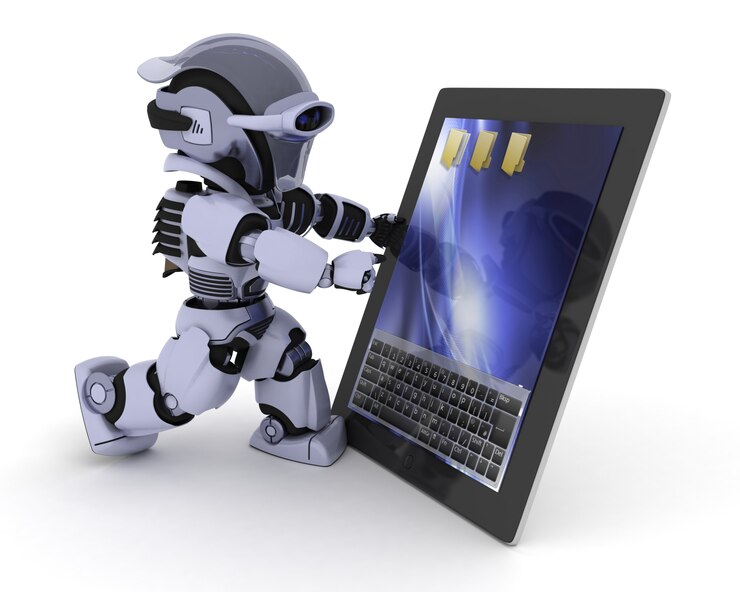Artificial Intelligence (AI) has become a dominant force in the world of technology, revolutionizing industries and reshaping the future of computer science. From powering everyday devices to developing autonomous systems, AI’s influence is undeniable. This article explores the science behind smart machines and how artificial intelligence is transforming the field of computer science, creating new opportunities, challenges, and innovations.
Top Courses in Computer Science Engineering
Understanding Artificial Intelligence in Computer Science
AI is a branch of computer science that deals with creating machines capable of simulating human intelligence. These machines can perform tasks that typically require human cognition, such as learning, reasoning, problem-solving, and decision-making. AI systems utilize algorithms, big data, and computational power to make predictions, recognize patterns, and improve over time without human intervention.
The roots of AI go back to the 1950s, but recent advancements in computational power, access to large datasets, and machine learning techniques have accelerated its growth. Today, AI is used in various applications, including natural language processing (NLP), robotics, machine vision, and self-driving cars.
How AI is Reshaping Computer Science
1. Innovative Algorithms and Machine Learning
At the heart of AI is machine learning, a subset of AI that focuses on developing algorithms that allow computers to learn from data and make predictions. This has transformed the way computer science approaches problem-solving. Traditional algorithms are rule-based, but AI-powered algorithms are dynamic, enabling machines to adapt and improve based on the data they process.
Machine learning has also made it possible to handle complex data, such as images, audio, and video. Neural networks, a machine learning model inspired by the human brain, have paved the way for advancements in image recognition, language translation, and speech-to-text applications.
2. AI in Software Development
AI has also revolutionized software development. AI-powered tools can now assist developers in writing, debugging, and optimizing code. Reducing the time and effort required to build complex applications. For instance, GitHub’s Copilot uses machine learning to suggest code snippets and even entire functions, based on the context of the project. These AI-driven tools allow developers to focus on higher-level tasks, enhancing productivity and reducing errors.
Furthermore, AI-driven testing tools automate the process of identifying bugs and security vulnerabilities, making software development more efficient and reliable. These AI systems also improve over time as they encounter more data, enhancing their ability to detect issues early in the development cycle.
3. AI and Robotics
AI has had a significant impact on robotics, which is closely linked to computer science. Robotics involves designing machines that can perform tasks autonomously or with minimal human intervention. With AI, robots are now capable of learning from their environments, improving their task performance over time.
From industrial robots that streamline manufacturing processes to medical robots performing surgeries with precision, AI has enabled the development of intelligent machines capable of working in environments that would be difficult or impossible for humans.
4. Natural Language Processing and AI
One of the most exciting aspects of AI’s impact on computer science is natural language processing (NLP). NLP helps computers understand, interpret, and respond to human language. This has given rise to technologies such as virtual assistants (like Siri and Alexa), chatbots, and AI-powered customer service tools.
These systems use advanced machine learning models to process human language in a way that is meaningful. NLP is also critical in translation services, content generation, and sentiment analysis, making it a vital component of AI applications in business and technology.

5. AI and Big Data
Computer science has also evolved with the integration of AI in big data analysis. The sheer volume of data generated today is impossible to process manually. But AI can sift through massive datasets, identify patterns, and provide actionable insights. This has transformed industries ranging from healthcare to finance by enabling data-driven decision-making.
In the field of data science, AI tools are used for predictive analytics, fraud detection, customer behavior analysis, and personalized marketing. As AI continues to improve, its ability to handle even larger datasets and make more accurate predictions will further push the boundaries of what’s possible in computer science.
6. Challenges and Ethical Considerations
While AI is transforming computer science, it also presents challenges. One of the biggest concerns is the ethical implications of AI. As machines become more intelligent and autonomous, questions arise regarding privacy, accountability, and the potential displacement of human jobs.
Moreover, the black-box nature of many AI systems makes it difficult to understand how decisions are made, leading to concerns about bias, fairness, and transparency. AI systems must be designed with ethical considerations in mind to ensure they are used responsibly and do not cause unintended harm.
7. Future of AI in Computer Science
The future of AI in computer science is promising. With advancements in quantum computing, AI systems could process even more data at unprecedented speeds. Making AI-driven solutions even more powerful and sophisticated. Additionally, AI research is focusing on making machines more creative and capable of performing tasks that require imagination and innovation, such as art and design.
In the coming years, we can expect AI to continue to reshape industries, enhance human capabilities, and open new possibilities in fields like healthcare, education, and space exploration. For more insights on AI and computer science, explore the AI courses and internships opportunities available on EasyShiksha and empower yourself with future-ready skills!
- Career Helper suggests occupations that correspond to your interests, values, aspirations, and personality.
-
Career Helper consists:
- IQ Test
- Basic Test
- Advance Test
- Psychometric Test
- Know your talents, skills, strengths, and weaknesses.
- Choose the profession that suits you best
- Get best career guidance by Experts.
- Know your career options with Easyshiksha. There are a lot of interesting career options in India you can consider after school and Indian colleges are now offering you some unique courses.
FAQs: Frequently Asked Questions
Q1. What is the difference between AI and machine learning?
AI refers to the broader concept of machines being able to perform tasks that would typically require human intelligence. Machine learning is a subset of AI that focuses on algorithms that allow computers to learn from data and make predictions or decisions without being explicitly programmed.
Q2. How does AI impact software development?
AI enhances software development by automating coding, testing, and debugging processes. AI-powered tools like GitHub’s Copilot assist developers in writing efficient code, while AI-driven testing tools help identify bugs and vulnerabilities earlier in the development cycle.
Q3. What are neural networks, and how are they related to AI?
Neural networks are a machine learning model inspired by the human brain’s structure. They are used in AI to process complex data, such as images and audio. Enabling applications like image recognition and language translation.
Q4. What ethical concerns are associated with AI?
AI raises ethical concerns such as privacy, job displacement, bias in decision-making, and accountability. There is also concern over the transparency of AI systems, as many operate as black boxes, making it difficult to understand how decisions are made.
Q5. How is AI used in robotics?
AI is used in robotics to enable machines to learn from their environment, improve task performance over time, and operate autonomously. This is seen in applications ranging from industrial robots in manufacturing to medical robots performing precise surgeries.
Related Article: Step into the AI Revolution: Transformative Training Opportunities
Get Courses: Native iOS And Android Apps
Conclusion
AI is driving a revolution in computer science, enabling machines to perform tasks once thought to be exclusively human. From machine learning algorithms to robotics and natural language processing. AI has transformed how we think about computing, problem-solving, and innovation. As AI continues to advance, its potential to revolutionize industries and improve lives is limitless.
At EasyShiksha.com, we believe in providing cutting-edge learning opportunities to prepare individuals for the AI-driven future. Our online courses and resources in AI and computer science are designed to equip you with the skills and knowledge necessary to thrive in this rapidly evolving field.



































































